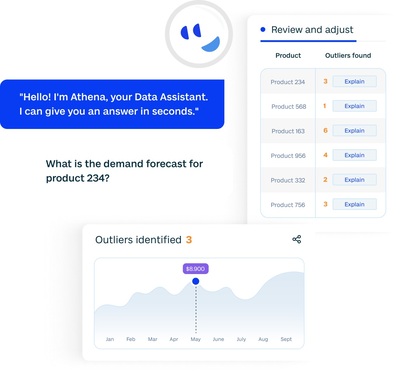Serving Up Efficiency: Why AI is the Next Big Ingredient in Food Manufacturing

With margins tight and supply chains unpredictable, AI-powered systems are becoming the secret weapon for food and beverage businesses ready to scale.
With AI dominating conversations and many businesses unsure which direction to take, Queensland’s leading universities — the University of Queensland, QUT, and the University of Southern Queensland — have stepped in to provide guidance. Partnering with Australia’s Food and Beverage Accelerator (FaBA), they released a landmark report aimed at demystifying AI’s role in the food sector.
The report, Food AI: A Game Changer for Australia’s Food and Beverage Sector, offers a deep dive into AI’s transformative potential. Featuring 37 actionable recommendations, it explores how AI can improve every stage of production, from supply chain logistics to real-time inventory management.
A standout insight is AI’s ability to connect previously separate parts of food manufacturing into one intelligent, integrated system. The report issues a clear call to action: new technologies now allow businesses to harness data throughout the production lifecycle to identify bottlenecks, predict disruptions, and make proactive adjustments. The result? Greater efficiency, reduced waste, and improved product consistency.
Rebecca Andrews, CEO of Manufacturing Skills Queensland, summed it up:
“Upskilling and reskilling our workforce in AI and automation is key to unlocking the value of these technologies for the food and beverage sector.”
Where to start? Immediate opportunities for food processing businesses
One of the areas where AI is making an immediate and measurable impact is inventory management — an operational pillar that can make or break a scaling business.
The issue is forecasting — when done poorly, it can lead to costly stockouts, excess inventory, and inefficient purchasing. The report reinforces that predicting demand accurately is crucial for production planning and supply chain optimisation, and AI’s predictive analytics now make this possible with unprecedented accuracy.
The report also explores how AI-driven analytics not only improves inventory management but also helps predict customer preferences. It offers manufacturers a way to respond to market shifts quickly while maintaining optimal stock levels. Examples are shared where this kind of agility can help overcome current labour shortages and improve profit margins.
Overcoming the limits of accounting-based inventory
To harness AI in inventory management, the first step is to review whether the existing system is fit for purpose.
Leading the offering in Australia for AI-supported inventory management tools is Fishbowl APAC Managing Director, Simon Jupe. Simon acknowledges that small-to-medium manufacturers’ reliance on the inventory modules of their accounting software — such as Xero, MYOB, or QuickBooks — could be holding them back.
“These tools were never designed to manage the complexity of a growing manufacturing operation,” said Simon. “As businesses scale, these limited systems can introduce costly inefficiencies, such as fragmented data, inaccurate stock counts, and slow, manual reporting.
“Manufacturers who stick with basic accounting-based inventory management often don’t realise the opportunity cost until it’s too late. AI is changing the game and we see that if you’re still using tools that can’t forecast, automate, or connect your operations in real time, you’re falling behind the competition.”
Meet Athena: AI inventory intelligence at your fingertips
Fishbowl’s latest innovation, AI Assistant Athena, is designed to give food and beverage manufacturers that real-time, system-wide intelligence. Athena allows businesses to interrogate any part of their inventory data — from sales results to stock counts — in natural language. This means production managers, buyers, and executives can ask Athena questions like:
- “Which products are most likely to run out in the next 10 days?”
- “How has sales performance for our top five SKUs changed month-to-month?”
- “What’s the optimal reorder point for our seasonal ingredients?”
Athena’s insights guide forecasting, purchasing, and efficiency decisions in entirely new ways. It leverages historical sales data, seasonal trends, and real-time stock information to deliver actionable recommendations that reduce waste, prevent shortages, and keep production flowing.
Why the time to act is now
The Food AI report makes it clear that businesses adopting AI-powered systems are positioning themselves to lead in efficiency, agility, and profitability. For manufacturers still relying on outdated accounting system inventory modules, the risks of inaction include higher operating costs, missed sales, and slower responses to market changes.
As Simon notes:
“The food and beverage sector is operating in a high-pressure environment, with tight margins, labour shortages, and volatile supply chains. AI gives you the tools to make faster, smarter, data-backed decisions. Those who embrace it now will be the ones setting the pace in the years ahead.”
With AI inventory intelligence like Fishbowl’s Athena, food and beverage manufacturers can move from reactive, manual processes to proactive, integrated decision-making. As the industry research shows, the companies that make the shift now won’t just survive, they’ll thrive.
Are your outdated accounting tools holding back your inventory and costing you time and money? Download Fishbowl Guide Today: Beyond the Bottleneck: The Top 5 Reasons Manufacturers Outgrow Their Accounting Software — and What to Do Next.
Mettler-Toledo Launches X3 Series to Transform Bulk Flow Inspection with Advanced Detection, Hygienic Design and Precision Rejects
X13 and X53 x-ray inspection systems deliver sharper detection, precision rejects and digital...
Bringing the benefits of PCR and automation to high-throughput beverage testing, with the SureTect Automation Platform
The Quality and Food Safety Manager for Coca Cola Europacific Partners discusses the process...
Milking more from every pump
Efficiency isn't just a buzzword in dairy plants, it's a daily necessity — and it...









